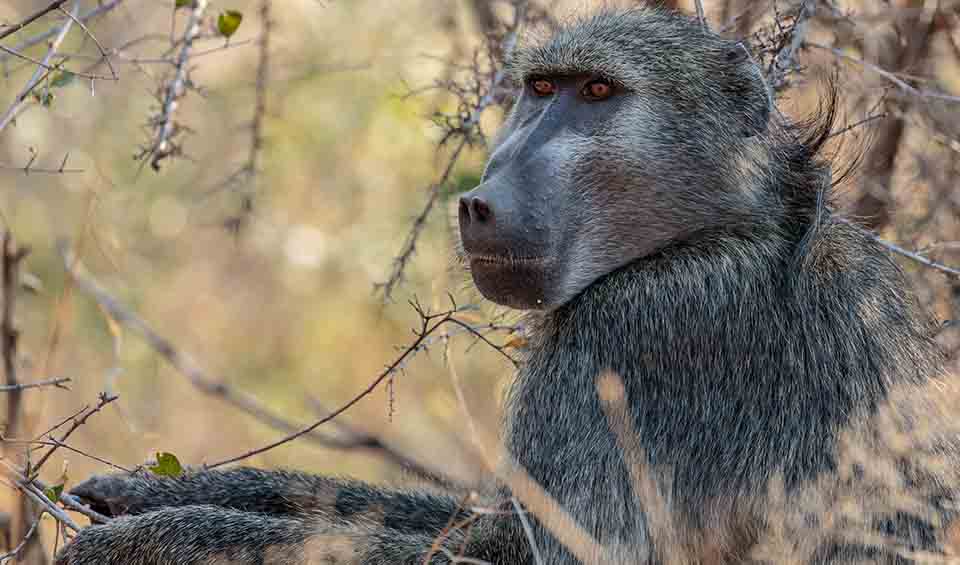With their powerful bodies, long limbs, shaggy fur, and expressive faces, Chacma baboons are highly adaptable primates that thrive in savannas, woodlands, mountain slopes, and even along coastlines. Their ability to live in so many different environments, combined with their complex social lives, makes them one of the most fascinating mammals of southern Africa.
Chacma baboons have coarse, dark brown or gray fur, long, dog-like muzzles, and large, powerful canines that give them an intimidating appearance when they yawn or threaten rivals. Their tails are long and arch downward, often with a slight kink at the base. Despite their tough look, Chacma baboons are highly intelligent and very social, living in troops that can number from a few individuals to over 100.
Social structure is key to Chacma life. Troops are organized with dominant males, matrilineal family groups, and complicated alliances. Female baboons usually stay with their birth troop for life, while males often migrate between troops when they reach adulthood. Grooming plays a crucial role in maintaining friendships, easing tensions, and strengthening alliances. Life within a troop involves constant negotiation, competition, and cooperation — a true daily drama of the African bush.
Chacma baboons are omnivorous and opportunistic feeders. Their diet includes fruits, seeds, leaves, roots, insects, small mammals, and even shellfish or fish along coastal areas. In some places, they have become bold around humans, raiding farms, picnic sites, and garbage bins for easy meals. Their adaptability and intelligence mean they can solve problems, use tools, and even strategically plan raids when it suits them.
Distribution
 Angola
Angola Botswana
Botswana Eswatini
Eswatini Lesotho
Lesotho Mozambique
Mozambique Namibia
Namibia South Africa
South Africa Zambia
Zambia Zimbabwe
ZimbabweAnything we've missed?
Help us improve this page by suggesting edits. Glory never dies!
Suggest an editGet to know me
Terrestrial / Aquatic
Altricial / Precocial
Polygamous / Monogamous
Dimorphic (size) / Monomorphic
Active: Diurnal / Nocturnal
Social behavior: Solitary / Pack / Troop
Diet: Carnivore / Herbivore / Omnivore / Piscivorous / Insectivore
Migratory: Yes / No
Domesticated: Yes / No
Dangerous: Yes / No




